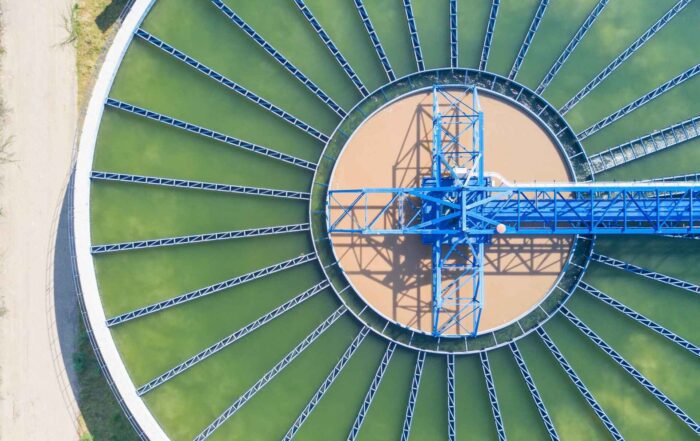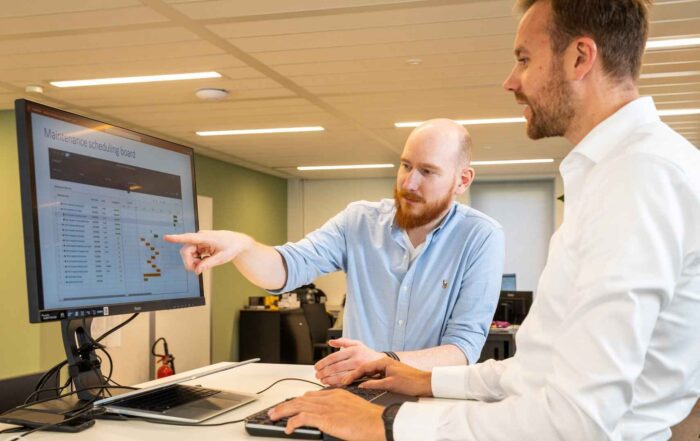TenneT is the Transmission System Operator (TSO) for the Netherlands and a significant part of Germany. MaxGrip was asked to work with the TenneT asset management team to take their risk-based asset management to a higher level and harmonize the way of working across the regions. TenneT’s asset management organization had two main challenges that they wanted to address, the first being a more efficient and effective maintenance approach due to a growing, aging asset base, and the second being to harmonize the Dutch, German, and offshore way of working with a single source of truth.
Challenge: Effective Maintenance Strategies
The asset management organization of TenneT had two noticeable challenges
that they wanted to address. The first is very practical: a growing, ageing asset
base called for a more efficient and effective maintenance approach to lower
the workload. Another point of improvement was harmonizing the Dutch, German
and offshore way of working, including implementing a single source of truth.
To overcome these two challenges, TenneT wanted to implement Reliability
Centered Maintenance (RCM) with extra attention paid to a uniform way of
working for all.
A data-driven risk-based approach helps to determine which maintenance activities
are most effective to maintain reliability. Moreover, it will boost maintenance
performance, reduce risks, improve safety and lower cost while still being
compliant to Dutch, German and European legislations.
“We have involved MaxGrip because they have a lot of domain
expertise and experience in APM change projects within global
companies. MaxGrip’s methodology fits us well. They are able
to take the reigns, get internal buy-in and realize results.
The consultants have aimed to transfer ownership of a project
as soon as possible to us. This is important to me: our own people
can take over and take our asset performance to the next level.”
Thijs Schuring, international head maintenance strategy at TenneT
Approach: Staged RCM Deployment
To lay the foundation for a robust RCM program, MaxGrip created an improvement
roadmap based on a current-state assessment. The steps to take focused on
ranking the assets based on their criticality, carrying out Failure Mode and Effects
Criticality Analyses (FMECAs) and then put maintenance strategies in place based
on those inputs. MaxGrip consultants focused on keeping the Dutch, German
and off-shore teams for both asset management and Grid Field Operations (GFO)
actively involved to enhance collaboration and uniform outcomes. Based on
this improvement plan, we started with a limited scope for the first stage of the
deployment.
Stage 1: pilot project
- Scoping how asset management is done for all different teams and harmonizing
the way forward by defining a common process and way of working. - Carrying out the criticality ranking of three object types (circuit breakers,
disconnectors and power transformers). The outcomes were discussed with
and validated by TenneT asset managers across the regions. - The next step was to organize FMECA workshops which were facilitated by a
MaxGrip consultant. Key stakeholders of the Dutch, German and offshore asset
management and GFO organizations were present. Together they proactively
identified all potential failure modes and their effects on the system. - All outcomes of the criticality rankings and FMECA sessions provided the
basis for new, uniform maintenance processes to prevent failure and improve
maintenance effectiveness. - Each country’s current way of working and processes were compared to the new
maintenance strategy. The differences and the consequences were documented
and relevant actions were taken including the change in needed resources. - The new maintenance strategy was released for upload in the SAP S/4 HANA
EAM system as a standard or template. - Project management throughout the first stage was important to get internal buy
in for the change. The MaxGrip consultants were in regular contact with crosscompany key stakeholders, ensured regular internal communication and provided
structure in the way of documentation, planning and safeguarding progress.
Ramp up in stages two to six
The second deployment stage is now under way with a ramp up to eight object types.
In this phase TenneT is taking the lead whereas MaxGrippers are taking a back seat
by supporting and coaching TenneT project leads. MaxGrip is providing TenneT with
templates and blueprints for the way of working to e.g. carry out a criticality ranking,
facilitate FMECA sessions (this includes moderator training sessions), get a robust
maintenance strategy in place and get internal buy-in across the board by applying
change management. After this second stage, another four stages will be completed.
The Results: Yearly Savings and Collaboration Across The Board
The project is ongoing with three stages taking place in 2023. The plan is for
TenneT to increase their ownership while MaxGrip will gradually scale down their
involvement. So far, the results are:
- €1,05 million savings year on year for stage 1 components;
- The deployment of Reliability Centered Maintenance is on track which provides
standardized processes and a future-proof maintenance strategy across the
international organization; - TenneT notices that their Dutch, German and offshore asset management and
GFO organizations collaborate more intensively. This shows in the uniform way
of working and increase of knowledge sharing; - The structured way of working that MaxGrip has set up, ensures that things get
done and all stakeholders have transparency on the process, progress and goals; - Transferring knowledge on risk-based asset management topics within TenneT,
including (moderator) trainings.
Get inspired
In this article we share our tips to proactively manage the maintenance backlog in times of change and a global pandemic.
Best practices and learnings about SAMP, AMPs and LTAP at two Dutch water authorities
Unlock the full potential of your EAM system by transitioning from implementation to deployment, fostering operational excellence and strategic success.





